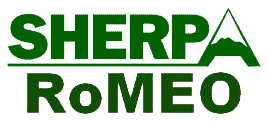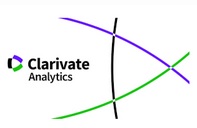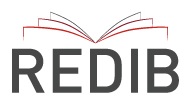Innovative methodology at the university. Its effects on learning processes of university students.
Agencias de apoyo
- Ministerio de Economía y Competitividad. Convocatoria Nacional de Ayudas para la financiación de Proyectos de I D en el marco del VI Plan Nacional de I D i 2008-2011
- convocatoria de 2011 (2013-2015). (Código EDU2012-32725)
Resumen
We wanted to assess the impact of learning-centered methodology on learning strategies and learning approaches of a students’ group of Chemistry. They were first year engineering students from the Polytechnic University of Valencia. We used a pre-experimental design with pretest and posttest measures by means of the CEVEAPEU and CPE questionnaires. The sample consisted of 20 students. The teaching methods included expositive methodology, questions, problem solving, development of a monograph, presentations, laboratory practices, team work, tutoring in the classroom and an evaluation system that made use of training procedures that returned feedback to students (two diagnostic tests, assessment of solved problems, self-assessment using the e-learning platform of the university, oral assessment in class, written tests, etc..). Significant improvements in learning strategies scores in the posttest and increasing in deep approach were found.
Descargas
Citas
Abalde, E., Muñoz, M., Buendía, L., Olmedo, E. Mª., Berrocal, E., Cajide, J., Soriano, E. Hernández Pina, F., García, M.P. y Maquillón, J. (2001). Los enfoques de aprendizaje en estudiantes universitarios españoles. Revista de Investigación Educativa. 19 (2), 465-489.
Alonso, F. y Méndez, R.Mª. (1999). Modelos de enseñanza de los profesores y enfoques de aprendizaje de los estudiantes: Un estudio sobre su relación en la Universidad de Santiago de Compostela. Adaxe, 14-15, 131-147.
Altbach, Ph. G. (2002). Research and training in higher education: the state of the art. Higher Education in Europe, 27 (1-2), 154-168.
Armbruster, P., Patel, M., Johnson, E. y Weiss, M. (2009). Active learning and student-centered pedagogy improve student attitudes and performance in introductory biology. Education, 8, 203-213.
Attard, A., Di Iorio, E., Geven, K. y Santa, R. (2010). Student centered learning. An insight into theory and practice.Bucarest: Partos Timisoara. Recuperado de http: http://download.ei-ie.org/SiteDirectory/hersc/Documents/2010%20T4SCL%20 Stakeholders%20Forum%20Leuven%20-%20An%20Insight%20Into%20 Theory%20And%20Practice.pdf
Bandura, A. (1978). The self-system in reciprocal determinism. American Psychologist, 33, 344-358.
Bandura, A. (1986). Social foundations of thought and action: A social cognitive theory. Englewood Cliffs. NJ: Prentice-Hall.
Bandura, A. (1989). Regulation of Cognitive Processes through Perceived Self-Efficacy. Developmental Psychology, 5 (5), 729-735.
Biggs, J. (1993). What do inventories of students’ learning processes really measure? A theoretical review and clarification. British Journal of Educational Psychology, 63, 3-19.
Biggs, J. (2005). Calidad del aprendizaje universitario. Madrid: Narcea.
Biggs, J., Kember, D. y Leung, D.Y.P. (2001). The revised two-factor Study Process Questionnaire: R-SPQ-2. British Journal of Educational Psychology, 71, 133-149.
Bista, K. (2011). How to Create a Learning-Centered ESL Program. English for Specific Purposes World, 10 (31), 1-13.
Boekaerts, M. (2006). Self-regulation and effort investment. En E. Sigel y K.A. Renninger (Vol. Eds.), Handbook of Child Psychology, Vol. 4, Child Psychology in Practice (pp. 345-377). Nueva York: John Wiley & Sons.
Boekaerts, M. y Niemivirta, M. (2000). Self-regulation in learning: Finding a balance between learning and ego-protective goals. En M. Boekaerts. P. R Pintrich. & M. Zeidner (Eds.), Handbook of Self-Regulation (pp. 417-450). San Diego. CA: Academic Press.
Brackin, M. (2012). Two-Year College Faculty and Administrator Thoughts about the Transition to a Learning-Centered College. Community College Journal of Research and Practice, 36 (3), 179-190.
Campbell, C. (2012). Learning-Centered Grading Practices. Leadership, 41 (5), 30-33.
Carwile, J. (2007). A constructivist approach to online teaching and learning. Inquiry, 12 (1), 68-73.
Christopher, C.M. y Rust, F O’C. (2006). Learning-Centered Assessment in Teacher Education. Studies in Educational Evaluation, 32 (1), 73-82
Cohen, J. (1988). Statistical power analysis for the behavioral sciences (2nd ed.). Hillsdale, NJ: Lawrence Erlbaum Associates.
Corno, L. (1994). Implicit teachings and self-regulated learning. Comunicación presentada en el Annual Meeting of the American Educational Research Association. New Orleans, LA, April, 4-8.
Crocker, J.C. y Algina, J. (1986). Introduction to classical and modern test theory. New York: Holt, Rinehart and Winston.
Dall’Alba, G. (1991). Foreshadowing conceptions of teaching. Studies in Higher Education, 13, 293-297.
De La Sablonnière, R., Taylor, D.M. y Sadykova, N. (2009). Challenges of applying a student-centred approach to learning in the context of Education in Kyrgystan. International Journal of Educational Development, 29, 628-634.
Entwistle, N. (1995). Frameworks for understanding as experienced in essay writing and in preparing for examinations. Educational Psychologist, 30, 47-54.
Entwistle, N. y Peterson, E. (2004). Learning styles and approaches to studying. En Ch. Spielberger (Ed.). Encyclopedia of Applied Psycology, Vol 2 (pp. 537-542). Amsterdam: Elsevier.
Freeman, S., O‘Connor, E., Parks, J.W., Cunningham, M., Hurley, D., Haak, D., Dirks, C. y Wenderoth, M.P. (2007). Prescribed active learning increases performance in introductory biology. CFB Life Sciences ducation 6 (2),132-139.
García Valcárcel, A. (1993). Análisis de los modelos de enseñanza empleados en el ámbito universitario. Revista Española de Pedagogía, 194, 27-53.
Gargallo, B. (2008). Estilos de docencia y evaluación de los profesores universitarios y su influencia sobre los modos de aprender de sus estudiantes. Revista Española de Pedagogía, 241, 425-445.
Gargallo, B., Garfella, P.R., Pérez, C. y Fernández, A. (2010). Modelos de enseñanza y aprendizaje. Ponencia presentada en XXIX Seminario Interuniversitario de Teoría de la Educación "Formación y participación de los estudiantes en la universidad". Madrid, Universidad Complutense. Recuperado de http://www.ucm.es/info/site/docu/29site/ponencia3.pdf
Gargallo, B., Suárez-Rodríguez, J. y Pérez-Pérez, C. (2009). El cuestionario CEVEAPEU. Un instrumento para la evaluación de las estrategias de aprendizaje de los estudiantes universitarios. RELIEVE, 15.
Gibbs, G. y Coffey, M. (2004). The impact of training of university teachers on their teaching skills, their approach to teaching and the approach to learning of their studentes. Active Learning in Higher Education, 5 (1), 87-100.
Gilmore, J. (2010). The development of stucent-centered teaching orientations and teaching practices among STEM students. University of South California, ProQuest, UMI Disserations Publishing, 3454732.
Gow, L. y Kember, D. (1993). Conceptions of teaching and their relationship to student learning. British Journal of Educational Psychology, 63, 20-33.
Hannafin, M. (2012). Student-Centered Learning. En N.M. Seel (Ed.), Encyclopedia of the Sciences of Learning (pp. 3211-3214). Nueva York: Springer. Recuperado de http://link.springer.com/content/pdf/bfm%3A978-1-4419-1428-6%2F1.pdf
Harpe, S. y Philips, L.B. (2008). Evaluating student perceptions of a learning-centered drug literature evaluation course. American Journal of Pharmaceutical Education, 72 (6), 135-139.
Haworth, J.G., Carter, K., Jozwiak, J. y Wilkin, D. (2007). An Innovative Partnership: Preparing Future Learning-Centered Community College Faculty. Journal of Faculty Development, 21 (1), 61-68.
Heise, B.A. y Himes, D. (2010). Educational Innovation: The Course Council-An example of student-centered learning. Journal of Nursing Education, 49(6), 343-345. doi:10.3928/01484834-20100115-04.
Hernández, R. (2012). Does continuous assessment in higher education support student learning? Higher Education, 64, 489-502. DOI 10.1007/s10734-012-9506-7
Hernández Pina, F. (2000). Acceso desde la educación secundaria a la universidad. La calidad del aprendizaje. Problemática y alternativas de mejora. En J. Cajide, M.A. Santos, y A. Porto, Calidad educativa y empleo en contextos multiculturales (pp. 27-54). Santiago: Universidad de Santiago. Servicio de Publicaciones.
Jornet, J. M. y Suárez, J. M. (1996). Pruebas estandarizadas y evaluación del rendimiento: usos y características métricas. Revista de Investigación Educativa, 14 (2), 141-163.
Kember, D. (1997). A reconceptualisation of the research into university academics’ conceptions of teaching. Learning and Instruction, 7, 225-275.
Kember, D. (2009). Promoting student-centred forms of learning across an entire university. Higher Education, 58, 1-13.
Kember, D. y Gow, L. (1994). Orientations to teaching and their effects on the quality of student learning. Journal of Higher Education, 65 (1), 59-74.
Kember, D. y Kwan, K. (2000). Lecturers’ approaches to teaching and their relationship to conceptions of good teaching. Instructional Science, 28, 469-490.
Larsson, S. (1983). Paradoxes in teaching. Instructional Science, 12 (4), 355-365.
Lavoie, D. y Rosman, A.J. (2007). Using active student-centred learning-based instructional design to develop faculty and improve course design, delivery, and evaluation. Issues in Accounting Education, 22 (1), 105-118.
Machemer, P.L. y Crawford, P. (2007). Student perceptions of active learning in a large cross-disciplinary classroom. Active Learning in Higher Education, 8 (1), 9-30.
Maclellan, E. (2008). The significance of motivation in student-centred learning: a reflective case-study. Teaching in Higher Education, 13 (4), 411-421.
Martin, E. y Ramsden, P. (1992). An expanding awareness: how lecturers change their understanding of teaching. En M.S. Parer (Ed.), Research and Development in Higher Education, Vol. 15 (pp. 148-155). Sidney: HERDSA.
McCune, V. y Entwistle, N. (2011). Cultivating the disposition to under-stand in 21st century university education. Learning and Individual Differences, 21 (3), 303-310.
Monereo, C. (1997). La construcción del conocimiento estratégico en el aula, en Mª.L. Pérez Cabaní, La enseñanza y el aprendizaje de estrategias desde el currículum (pp. 21-34). Gerona: Horsori.
Monereo, C. y Pozo, J.I. (2003). La universidad ante la nueva cultura educativa. Enseñar y aprender para la autonomía. Madrid: Síntesis.
Morera Bertomeu, I., Atienza Boronat, J., Bautista Carrascosa, I., Climent Olmedo, Mª J., Iborra Chornet, S. y Ribes Grau, A. (2012). Innovación Metodológica: Experiencias en la Asignatura de Química en Escuelas de Ingeniería. Jornadas de Innovación Educativa de la UPV. 12 y 13 de julio de 2012. ISBN 97884-8363-926-9
Mostrom, A. y Blumberg, P. (2012). Does Learning-Centered Teaching Promote Grade Improvement? Innovative Higher Educacion, 37 (5), 397-405.
Nitza, D. (20113). Learning.centered teaching and backward course design-From transferring knowledge to teaching skills. Journal of International Research, 9 (4), 329-338.
Nygaard, C., Højjlt, T. y Hermansen, M. (2008). Learning-based curriculum development. Higher Education, 55(1), 33-50.
Pintrich, P. R. (1989). The dynamic interplay of student motivation and cognition in the college classroom. En C. Ames and M. Maehr (Eds.), Advances in motivation and achievement: Motivation enhancing environments (Vol. 6) (pp. 117-160). Greenwich. CT: JAI Press.
Pintrich, P. R. (1995). Understanding self-regulated learning. New Directions for Teaching and Learning, 63, 3-12.
Pintrich, P. R. (2000). The role of goal orientation in self-regulated learning. En M. Boekaerts, P. Pintrich y M. Zeidner (Eds.), Handbook of Self-Regulation (pp. 451-502). California. Academic Press.
Pintrich, P. R. (2004). A conceptual framework for assessing motivation and self-regulated learning in college students. Educational Psychology Review, 16 (4), 385-407.
Popham, J. (1990). Modern educational measurement. Boston, MA: Allyn and Bacon.
Pucha, R. y Utschig, T. (2012). Learning-Centered Instruction of Engineering Graphics for Freshman Engineering Students. Journal of STEM Education: Innovations and Research, 13 (4), 24-33.
Roid, G. H. y Haladyna, T. M. (1982). A technology for test-item writing. Nueva York: Academic Press.
Samuelowicz, K. y Bain, J.D. (1992). Conceptions of teaching held by academic teachers. Higher Education, 22, 229-249.
Samuelowicz, K. y Bain, J.D. (2001). Revisiting academics’ beliefs about teaching and learning. Higher Education, 41, 299-325.
Samuelowicz, K. y Bain, J.D. (2002). Identifying academics’ orientations to assessment practice. Higher Education, 43, 173-201.
Scott, W., Lisagor, T. y Marachi, R. (2009). Learning Centered Universities: The Changing Face of Higher Education. Journal of Faculty Development, 23 (1), 61-68.
Tessier, J. (2007). Small-group peer teaching in an introductory biology classroom. Journal of College Science Teaching 36 (4), 64-69.
Tien, L.T., Roth, V. y Kampmeier, J.A. (2002). Implementation of a peer-led team learning instructional approach in an undergraduate organic chemistry course. Journal of Research in Science Teaching 39 (7), 606-632.
Weinstein, C.E., Husman, J. y Dierking, D. (2002). Self-Regulation Interventions with a focus on learning strategies. En M. Boekaerts, P.R. Pintrich y M. Zeinder, Handbook of Self-regulation (pp. 727-747). San Diego: Academic Press.
Yip, M.C.W. (2012). Learning strategies and self-efficacy as predictors of academic performance: a preliminary study. Quality in Higher Education, 18 (1), 23-34.
Zabalza, M.A. (2012). Metodología docente. REDU (Revista de Docencia Universitaria, 9 (3), 75-98.
Zimmerman, B.J. (1986). Becoming a self-regulated learner: Which are the key sub-processes? Contemporary Educational Psychology, 11, 307-313.
Zimmerman, B.J. (2002). Becoming a self-regulated learner: an overview. Theory into Practice, 41, 64-70.
Zimmerman, B.J. y Schunk. D.H. (Eds.) (1989). Self-Regulated Learning and Academic Achievement: Theory. Research and Practice. Nueva York: Springer-Verlag.
Las obras que se publican en esta revista están sujetas a los siguientes términos:
1. El Servicio de Publicaciones de la Universidad de Murcia (la editorial) conserva los derechos patrimoniales (copyright) de las obras publicadas, y favorece y permite la reutilización de las mismas bajo la licencia de uso indicada en el punto 2.
© Servicio de Publicaciones, Universidad de Murcia, 2024
2. Las obras se publican en la edición electrónica de la revista bajo una licencia Creative Commons Reconocimiento-CompartirIgual 4.0 Internacional (texto legal). Se pueden copiar, usar, difundir, transmitir y exponer públicamente, siempre que: i) se cite la autoría y la fuente original de su publicación (revista, editorial y URL de la obra); ii) no se usen para fines comerciales; iii) se mencione la existencia y especificaciones de esta licencia de uso.
3. Condiciones de auto-archivo. Se permite y se anima a los autores a difundir electrónicamente las versiones pre-print (versión antes de ser evaluada y enviada a la revista) y/o post-print (versión evaluada y aceptada para su publicación) de sus obras antes de su publicación, ya que favorece su circulación y difusión más temprana y con ello un posible aumento en su citación y alcance entre la comunidad académica. Color RoMEO: verde.













